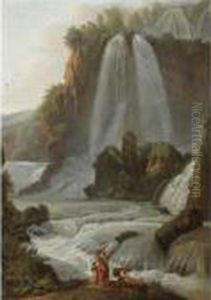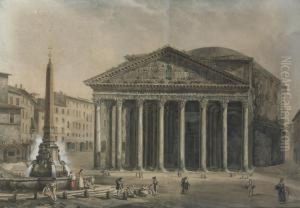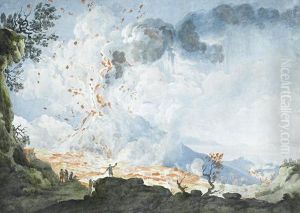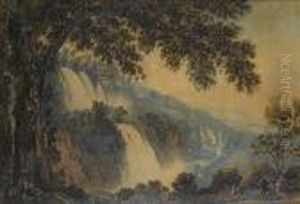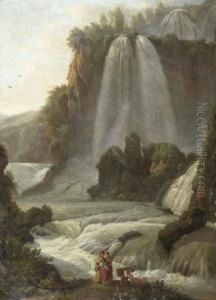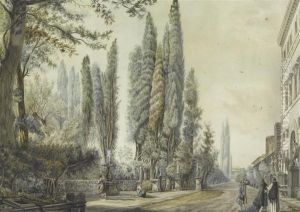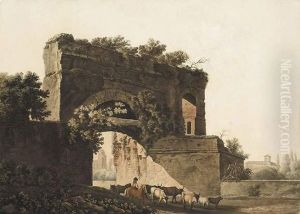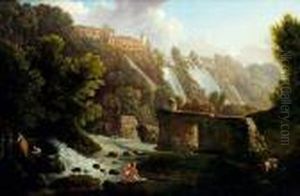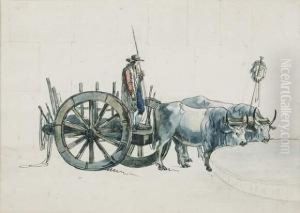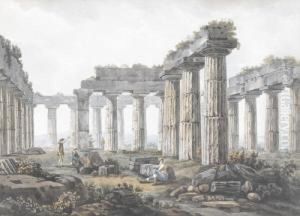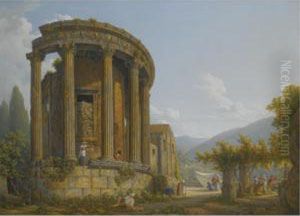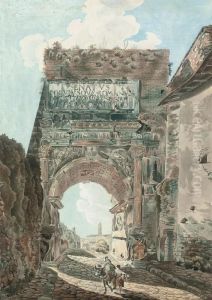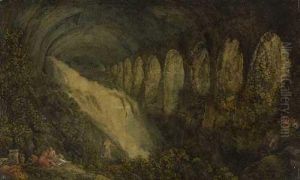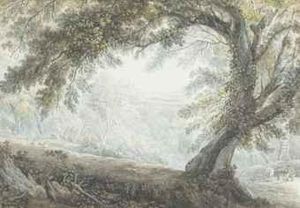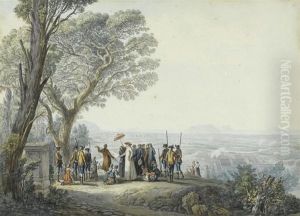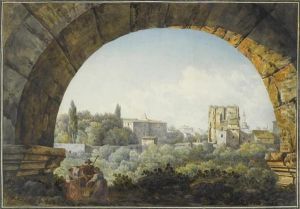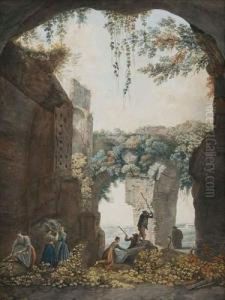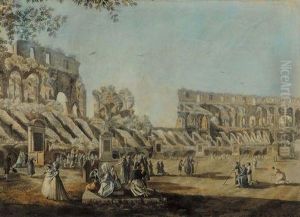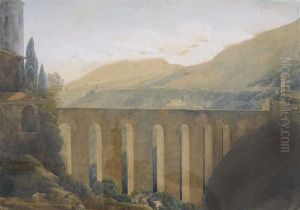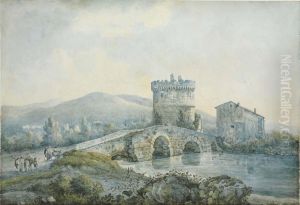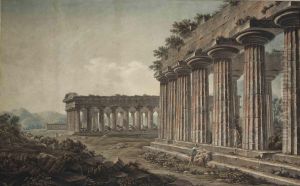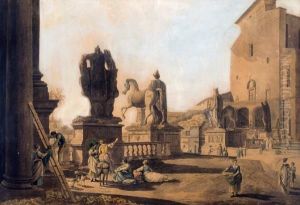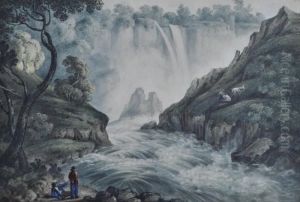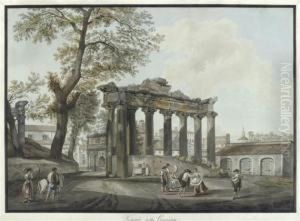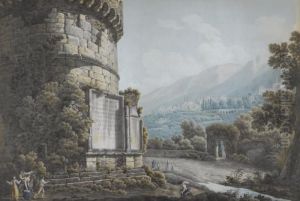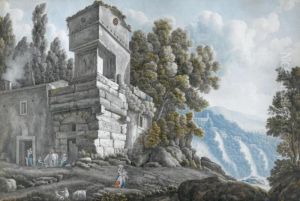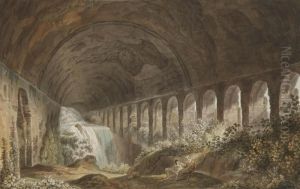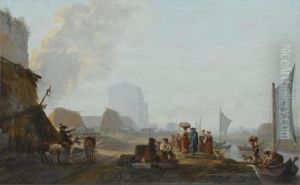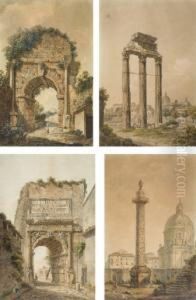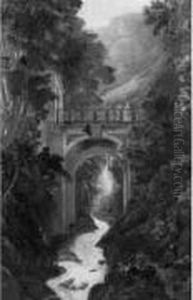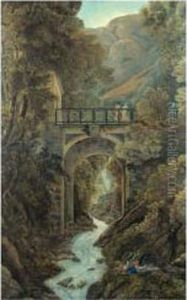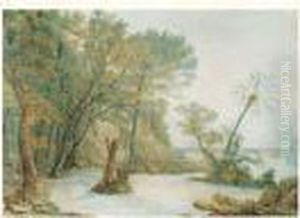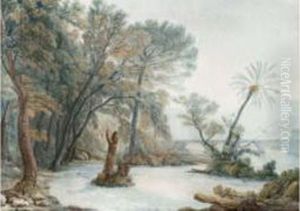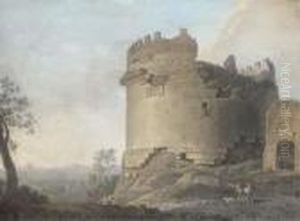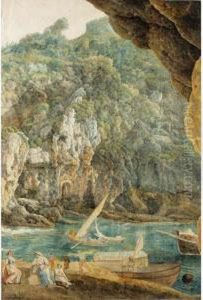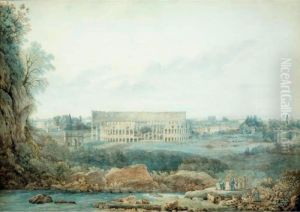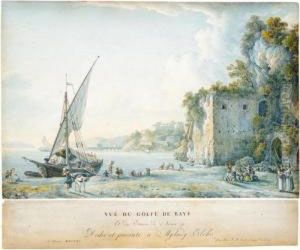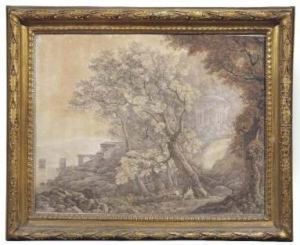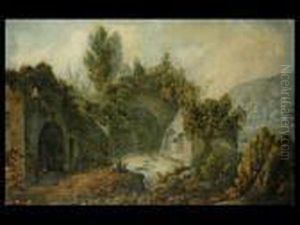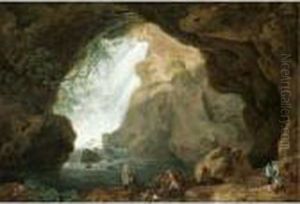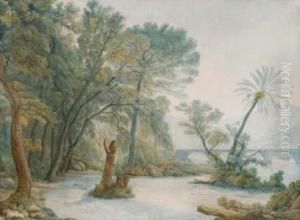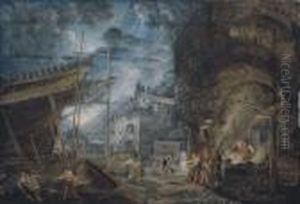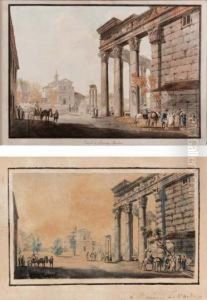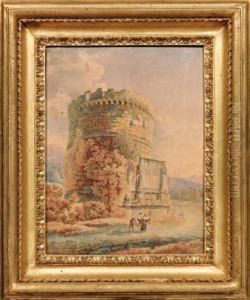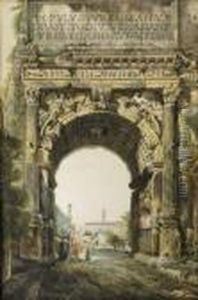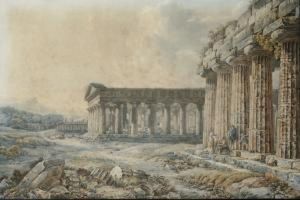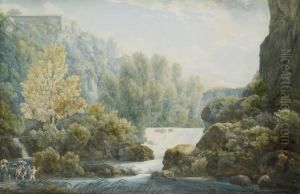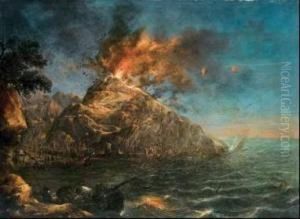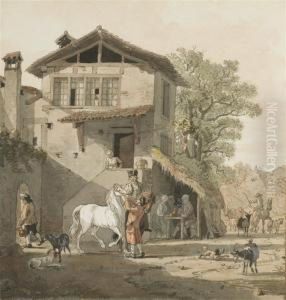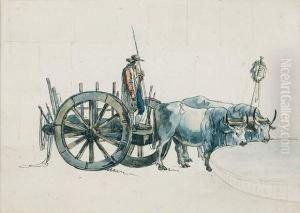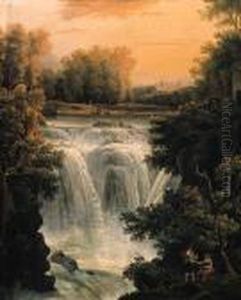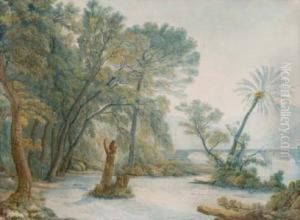Abraham Louis R. Ducros Paintings
Abraham Louis Rodolphe Ducros, born in 1748 in Lausanne, Switzerland, was an artist primarily renowned for his work as a watercolorist and engraver. Ducros displayed artistic talent from a young age and pursued an education in art, which led to his development as a skilled draftsman and painter. His early work was influenced by the picturesque tradition, and he became particularly adept at capturing landscapes and architectural scenes with a remarkable sense of detail and accuracy.
During his lifetime, Ducros traveled extensively, which greatly influenced his artwork. One of his significant travels took him to Italy, and he spent considerable time in Rome. The city's classical ruins and the Italian countryside became central themes in his works. Ducros was particularly fascinated with the Roman Campagna, the area surrounding Rome, known for its historic landscapes and ruins. His depictions of these scenes were highly sought after by Grand Tour travelers, who desired mementos of their travels and the classical world.
Ducros's technique involved using gouache and watercolor to create vivid and luminous scenes that were praised for their clarity and lifelike quality. He was a master at rendering light and atmosphere, which added to the immersive and idyllic qualities of his landscapes. Ducros also produced a number of prints and engravings, which further disseminated his work among connoisseurs and collectors throughout Europe.
Despite his success, Ducros faced financial difficulties later in life. He struggled to maintain his reputation in a changing art market that began to favor new styles and forms of expression. Nevertheless, his contribution to the art of watercolor and his role in documenting the classical landscape during the 18th century have secured his place in the history of European art.
Abraham Louis Rodolphe Ducros died in 1810, leaving behind a legacy of work that continues to be appreciated for its technical skill and its evocative representation of the European landscape during a period of great cultural interest in antiquity and the Grand Tour.
